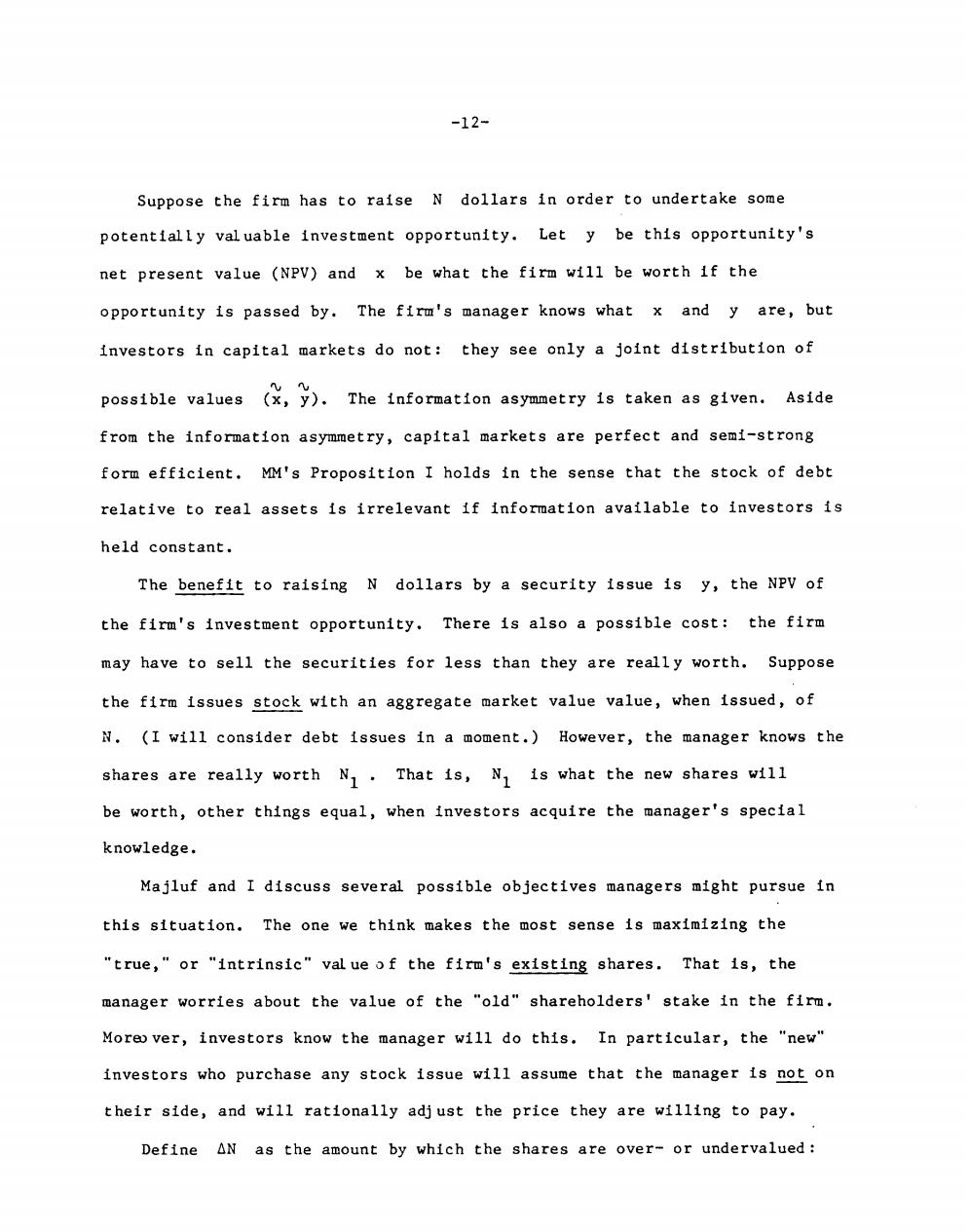正在加载图片...

-12- Suppose the firm has to raise N dollars in order to undertake some potentially valuable investment opportunity.Let y be this opportunity's net present value (NPV)and x be what the firm will be worth if the opportunity is passed by.The firm's manager knows what x and y are,but investors in capital markets do not:they see only a joint distribution of possible values (x,y).The information asymmetry is taken as given.Aside from the information asymmetry,capital markets are perfect and semi-strong form efficient.MM's Proposition I holds in the sense that the stock of debt relative to real assets is irrelevant if information available to investors is held constant. The benefit to raising N dollars by a security issue is y,the NPV of the firm's investment opportunity.There is also a possible cost:the firm may have to sell the securities for less than they are really worth.Suppose the firm issues stock with an aggregate market value value,when issued,of N.(I will consider debt issues in a moment.)However,the manager knows the shares are really worth N.That is,N is what the new shares will be worth,other things equal,when investors acquire the manager's special knowledge. Majluf and I discuss several possible objectives managers might pursue in this situation.The one we think makes the most sense is maximizing the "true,"or "intrinsic"val ue of the firm's existing shares.That is,the manager worries about the value of the "old"shareholders'stake in the firm. More ver,investors know the manager will do this.In particular,the "new" investors who purchase any stock issue will assume that the manager is not on their side,and will rationally adjust the price they are willing to pay. Define AN as the amount by which the shares are over-or undervalued: